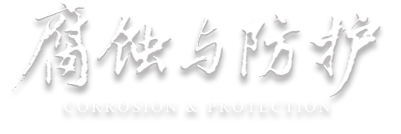Abstract:
RGO/Fe
3O
4 binary nanocomposites were prepared by combining restore oxidation graphene (rGO) with Fe
3O
4 and reducing it with aniline as a reducing agent. Then aniline underwent in-situ oxidation polymerization on the surfaces of Fe
3O
4 and rGO to form polyaniline (PANI). Finally, the rGO/Fe
3O
4 composite material was coated with polyaniline, and a multi-layered rGO/Fe
3O
4/PANI/EP composite coating was prepared using waterborne epoxy resin (EP) as a filler. The corrosion resistance and mechanism of rGO/Fe
3O
4/PANI/EP coatings were studied using Tafel polarization curves, electrochemical impedance spectroscopy, neutral salt spray testing, and photoelectro spectroscopy. The results showed that the RGO/Fe
3O
4/PANI/EP coatings had the best salt spray resistance, good dispersion, and stability compared to pure epoxy coatings and rGO/Fe
3O
4/EP coatings. The anti-corrosion mechanism of the composite material was the high efficiency barrier performance of graphene and the electrochemical intelligent passivation effect of PANI enhanced by the ternary composite material.

 下载:
下载: